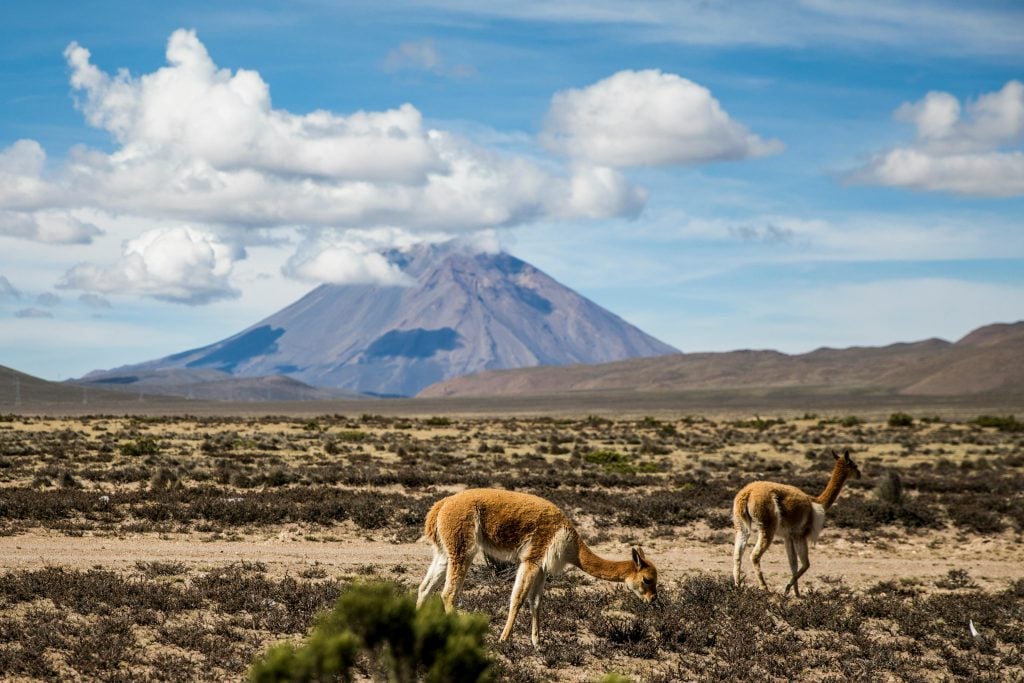Mount Cerro Vicuña: A Technical Peak in the Andes Mountains
The Andes Mountains, serving as the backbone of South America, are a fascinating laboratory for mountaineers and scientists alike, housing countless peaks. One such peak is Cerro Vicuña (approximately 6067 meters), which stands out particularly for its technical details and geographical location. Situated near the Ojos del Salado region in Chile, known for its high volcanic summits, Cerro Vicuña not only sheds light on regional geology but also holds a special place in mountaineering. Mount Cerro Vicuña: A Technical Peak in the Andes Mountains
Geographical and Technical Specifications
Geographically, Cerro Vicuña is located in the Atacama Region of Chile, close to the Argentine border. Situated on the volcanic belt of the Andes Mountains, the exact altitude of the mountain varies slightly depending on different measurement methods, but it is generally accepted as 6067 meters. Data obtained from digital elevation models confirms this: SRTM data yields 6063 meters, ASTER data 6041 meters, and TanDEM-X data around 6109 meters. These differences can arise from the resolution of the technology used and data collection principles, and are common for high-altitude mountains.
The mountain’s topographic prominence, which indicates how much it rises above the lowest contour connecting it to a higher peak, is approximately 726 meters. This value positions Cerro Vicuña as a significant peak in its own right, making it a potential independent climbing objective. Its topographic isolation, the distance to the nearest higher summit, is approximately 6.3 kilometers. This isolation demonstrates that the mountain is distinctly separated from the surrounding topography.
Geological Context
The region where Cerro Vicuña is located is an active part of the Andean Volcanic Belt. The geology of the area is quite complex, generally consisting of Miocene-era volcanic rocks and younger intrusions emplaced within them. Cerro Vicuña and its surroundings may lie within the Vicuña Metallogenic Belt, known for its epithermal and porphyry type deposits. This belt is associated with mineralization zones containing valuable mineral deposits (gold, silver, copper). Fault lines and structural deformations in the region have played a significant role in magmatic activity and mineralization processes. The mountain itself is likely a product of this volcanic activity. Prominent silicified areas and alteration zones at high altitudes are indicators of past hydrothermal activity.
Mountaineering and Technical Accessibility
In terms of technical climbing difficulty, Cerro Vicuña is generally classified as “easy” or “moderate” (e.g., YDS class 2). This means it has routes that do not require professional rock climbing skills but do demand high-altitude experience, good physical condition, and proper equipment. It is particularly known for being used for acclimatization for higher peaks like Ojos del Salado. Climbing routes typically follow sloping terrain composed of volcanic sand, moraine, and small rock blocks. Technical knowledge here becomes important concerning the effects of high altitude (low oxygen levels), weather variability (sudden temperature drops, wind), route finding, and potential hazards (icing, avalanche risk depending on the season).
The Elegant Resident of the High Andes: The Vicuña
The Vicuña (Vicugna vicugna) is an elegant and slender camelid species native to the high plateaus of the Andes Mountains in South America. A wild relative of llamas and alpacas, Vicuñas are perfectly adapted to extreme altitude conditions. They are particularly known for their fine, warm, and highly valuable wool. Distinguished by their light brown backs and white chest/belly areas, these creatures typically live in small family groups grazing on grasslands. Known for their shy nature, Vicuñas are an important part of the Andean ecosystem and have even inspired the naming of mountains like “Cerro Vicuña.” Spotting them grazing on the high Andean steppes is one of the region’s unique natural beauties.
Conclusion
Cerro Vicuña is a captivating mountain not only for its geographical location and altitude but also for its technical characteristics and geological structure. Its elevation over 6000 meters, distinct topographic features, and volcanic history make it an important target for both scientific research and mountaineering activities. This impressive peak in the Andes offers a technical and exploratory experience for those seeking to understand the geodynamic evolution of the region and tackle the challenges posed by high-altitude environments.
Argentina’s Top 10 Highest Mountains: Peaks of South America





